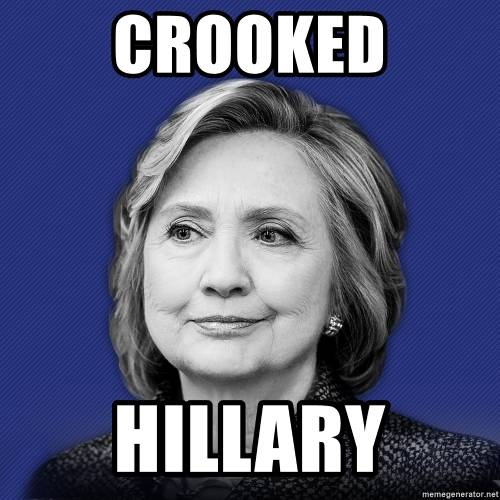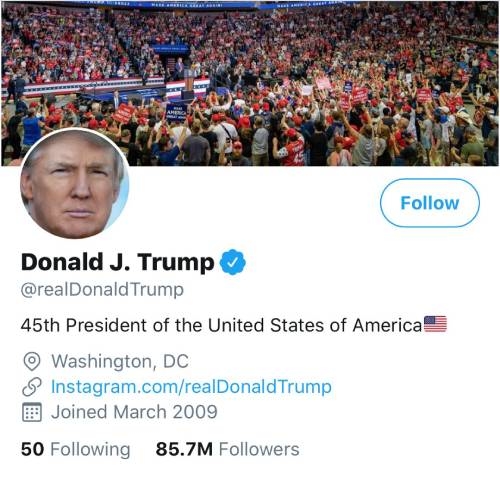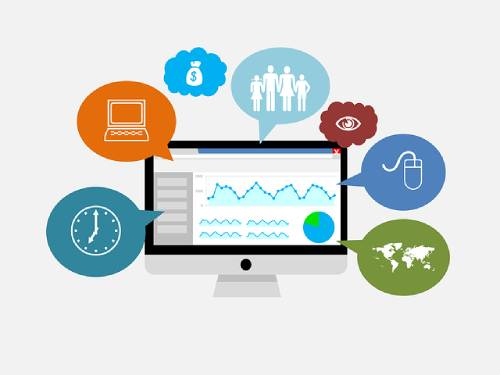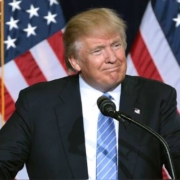In 2016, Donald Trump beat Hilary Clinton to be the 45th president of the United States of America. Trump’s victory sent shockwaves around the world as he lost the popular vote, but somehow received 77 more electoral votes than Clinton.
Casting the ballots in for your president can be a similar experience to shopping. You see advertisements around and you try to collect as much information as possible before you make the final purchasing decision. Although choosing a candidate to vote for is more complicated, it also involves a great deal of marketing.
During a post-election interview, Trump claimed that ‘social media helped me win’.
Looking back at his 2016 presidential campaign, he first managed to outsmart his rivals for the Republican seat and then edged Democrat candidate Hillary Clinton. Many experts believe that marketing won him the presidency. His unexpected victory was fueled by a very strong digital marketing campaign. According to search engine giants Google, Trump appeared in way more search results than his opposition.
Many might think Trump forked out millions for his campaign. But in reality, he invested a tiny amount on traditional forms of advertising. You can’t even compare his advertising budget to that of Clinton’s (which was a whopping $194 million). In the last two months leading to election day, Trump only spent $4.4 million on advertising. It might sound like a ton of cash, but it’s nothing in the $6 billion industry of American political advertising.
With insights into his budget, Trump’s success sheds light on the power of content marketing and social media. In the 21st century, traditional forms of communication no longer have the effectiveness they once had. These days, a small investment could also help you to achieve success. Just like Trump did with new media.
Let’s take a look at how his marketing campaign was one of the biggest reasons he won the presidential election.
Using Brand Identity to his advantage
Before entering the world of American politics, Trump was a well-known businessman and television personality. With his main business as a real-estate developer, he owns and manages hotels, casinos, golf courses, resorts, and residential properties around the world.

In 2004, he began hosting the American reality television program ‘The Apprentice’. The show featured businessmen and businesswomen who competed for a spot in Trump’s organization. All tasks were business-related covering product selling, fundraising, advertising campaigns, and so on.
After hosting the show for 14 seasons, he became popular around the globe and then declared that he would be running for president. With his fame and popularity, he used his famous name and established brand to attract attention.
“Trump capitalized on the power of the Trump brand, which people associate with and aspire to luxury, wealth and celebrity,” said Tim Calkins, professor of marketing at Northwestern University’s Kellogg School of Management.
Hillary Clinton was also known to the world as a former First Lady of the United States. However, her branding wasn’t as powerful or appealing. In the entertainment world, she had no brand identity.
Communicating messages different from other candidates
Trump’s campaign slogan was “Make America Great Again”, which became known around the globe as “MAGA”. He used extreme messages that no other candidate would have ever dared to say. His courage to do so helped him to stand out from other candidates.
“Build the wall and make Mexico pay for it” – Donald Trump on what he would do if he got elected.
Here’s an example of one of his statements. It’s so absurd, but only one man can pull it off. All his messages targeted groups of voters that shared similar lifestyles, perceptions, and concerns. His campaign resonated with those that were more interested in driving the local economy. As well as those who felt concerned over their public safety. All in all, his messages communicated that he was going to make a change and he stayed consistent with his communication.
Framing competitors as the “problem”
“Trump created a sense of what the problem was, framed it and then juxtaposed himself as the solution,” according to Russ Klein, chief executive of the American Marketing Association.
Focusing on the weaknesses of his competitors, he made them all look like they were the problem and he was the solution. To top it off, he labeled them with nicknames that just stuck. The nicknames were devastatingly unflattering and lowered their credibility in the minds of voters.
Here are some of the top nicknames:
‘Crazy Bernie’
Origin: Campaign rally in Pensacola, Florida, on Jan. 13, 2016.
‘Crooked Hillary’
Origin: Campaign rally in Watertown, New York, on April 16, 2016.

Memes of Hillary Clinton were shared all over the internet
‘Little Marco’
Origin: Campaign rally in Columbus, Ohio, on March 1, 2016.
‘Lyin’ Ted’
Origin: Campaign rally in Columbus, Ohio, on March 1, 2016.
‘Low Energy’ Jeb
Origin: August 2015.
‘Goofy Elizabeth Warren’
Origin: May 6, 2016.
Gaining attention from numerous rallies
Public appearances will garner attention. Trump participated in as many as he could to generate buzz and media attention. During the campaign, a total of 323 rallies were held: 186 for the primary season and 137 for the general election.
He put himself out there to communicate his message to the voters. At his rallies, with a total attendance close to 1.4 million people, he talked about their concerns, values, and lifestyles. At the opposing end, Clinton’s rallies were pale in comparison.
Social media know-how
“I doubt I would be here if it weren’t for social media, to be honest with you,” the president told Fox Business Network’s Maria Bartiromo
Social media is a tremendous platform when it comes to communicating with your voters. In January 2016, 44% of American adults stated that they turn to this form of media for news on the presidential election. Fewer people are picking up local and national newspapers for this type of news.

As of September 2020, the Republican president has over 85 million followers on Twitter. Going back four years to 2016, he had amassed a 52 million following. During his campaign, social media was his primary communication channel. His strategy wasn’t about posting pre-planned messages or directing people to his campaign website. Instead, he engaged with his supporters and started conversations with them. Although some of his tweets were controversial, it earned him free coverage from the press. Whatever he tweeted ended up creating buzz and being featured in the latest shows.
Just like other top influencers, he knows how to use social media such as Facebook and Twitter to keep people in the loop and show what’s going on in his life. Among the world’s politicians, he has the most popular Twitter account.
Digital marketing offers an array of prominent features that traditional channels simply aren’t able to. Here are some of the standout features helping to change political marketing:
Reach individuals directly
Times are changing and it may no longer be effective to rely on traditional forms of advertisement. In the past, presidential candidates often used the television, radio, snail mail, cold calls, and ambassadors to bring about awareness. There was no way of communicating directly with individuals.
With traditional forms of advertising targeting larger groups at once, the messages communicated were very general. With digital marketing, candidates can reach voters directly through efforts like SEO, pay per click (PPC), blogging, and more.
Craft personalized messages
With digital marketing, presidential candidates can understand more about the voters. Messages are customizable and tailored according to the interests and concerns of the public.
Imagine how personalized a marketing message could be. The message might:
- Address you by name
- Be delivered on the channels you’re most likely to check
- Address a concern or interest that’s been on your mind
A personalized message is way more effective than just a generic one targeted to a large group. Unlike past campaigns, the messages feel more like a face to face conversation you’re having with a politician. It’s as if the politician has his or her eyes directly on you and understands exactly what you need.
Engage even more with voters
With so many options provided by social media, there’s a ton of content a politician can put out there. The best part is the frequency is unlimited. You could post donation requests, the latest events, legislation updates, and so much more.
One of the best ways to engage with your voters is through live video. Instead of traditional news shows, this feature allows politicians to make announcements and have conversations. The days of just talking at your voters are long gone. Live videos are done in real-time and encourage personable engagement.
Asking questions is also another option to boost your engagement on social media. It’s always good to have two-way communication because it shows that you’re willing to lend your ears. For example, with Instagram stories, you’re able to ask questions and post the answers to all your followers.
Thanks to digital marketing, candidates can reach individuals on a larger scale. This means more accurate polls, more engaging Q&A sessions, and sharing of content.
Analytics to study campaigns
Before the rise of the Internet, the data collected by political parties generally covered home addresses, voting history, party affiliation, and other simple categories. However, with better insights through analytics, information on voters has grown drastically.
All the data collected is then organized by computer algorithms. This allows campaigns to efficiently go through the issues and concerns that voters care about most. The Trump campaign in 2016 reportedly “target[ed] 13.5 million persuadable voters in sixteen battleground states, discovering the hidden Trump voters, especially in the Midwest” (Persily, 2017, p. 65). Based on this report, campaigns can be data-driven and we’ll be seeing more of it in the future.

Analytics is crucial to a presidential campaign. Besides insights into voter behavior and interests, you can also see which campaigns are working. For example, with hashtags, you can measure the relevancy and popularity. If a hashtag is trending and being used positively, then you know there’s a plus point for the candidate.
On top of that, digital marketing also tells candidates the best days and times to post on social media. You might be wondering why, but the best day and time to post on Facebook, for example, is on a Wednesday at 11 am or 1 pm. This was based on data collected by Sprout Social.
Free or cost-effective options
A presidential campaign often means many millions of dollars being spent. No matter where the funds are coming from, candidates need to be smart with their budgets. This is where digital marketing helps with optimizing budgets. Although campaigns might still be considered expensive, the price tag is much more affordable and reasonable than conventional media. Besides, there are so many free or cost-effective options to be employed in a politician’s playbook.
Digital marketing campaigns don’t always mean that money is going out. It can also help bring money in through fundraising. According to Donald Trump’s digital director Brad Parscale, the biggest social networking platform in the world was detrimental to generating a big portion of the campaign’s funds.
“Facebook was the single most important platform to help grow our fundraising base.” – Brad Parscale
Parscale’s team utilized multi-variate testing for fundraising. The team had been testing up to 60,000 variations of Facebook Ads a day. They were very successful in this area as the ads helped them to generate $90 million in August 2016 and the amount continued to grow as the campaign continued.
Whether he’s a likable character or not, Trump’s utilization of digital marketing during the 2016 presidential campaign is definitely something to take note of. It has shown how powerful content marketing and social media can be, beating traditional forms of communications. As we approach the 2020 election day, we will see digital marketing play a huge role in how candidates communicate and engage with voters. Every candidate out there will be trying to target individuals, hoping to win their votes.
Community

Congratulations on reaching the end!
Check out our podcast Impact Talks, where you can listen to high-profile experts from various backgrounds!
Join our Facebook Group Community with over 4,700 entrepreneurs, innovators, and creators by Startup Funding Event, where you get access to free live training, daily Q&As, design templates to get your business started, and support from the SFE team. Join here!

